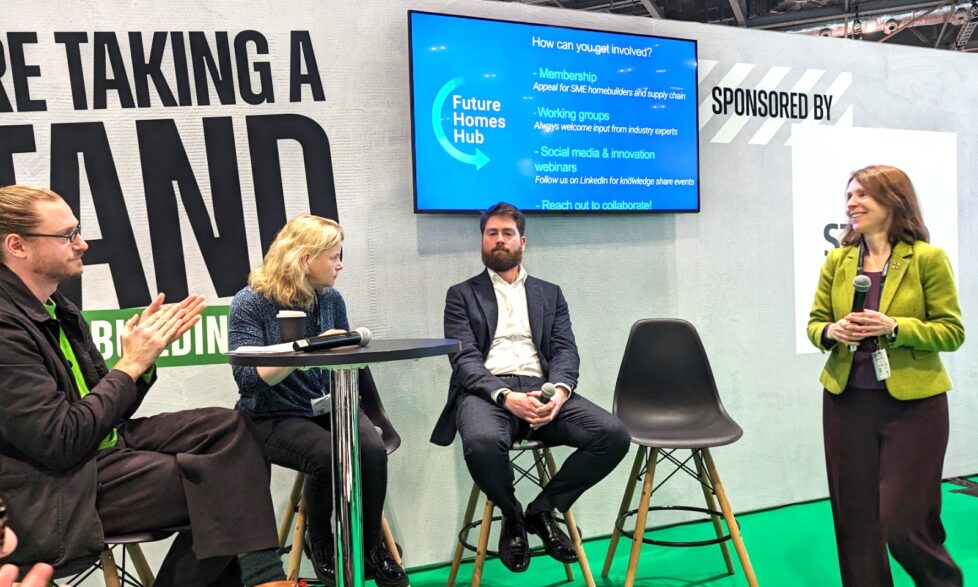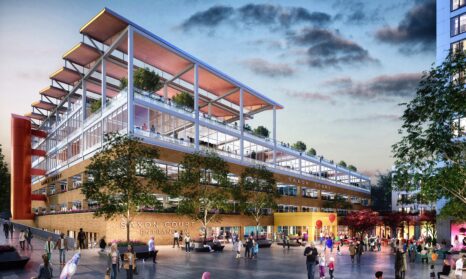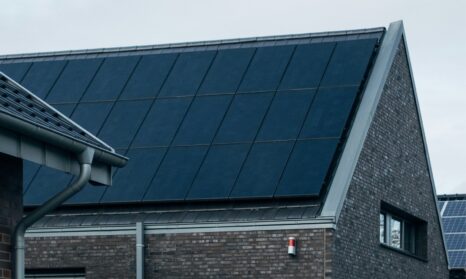Built environment leaders set out essential steps to unlock sustainable homes and communities
Futurebuild’s mission – to place sustainability at the heart of how we design and operate our homes and communities – has never been more urgent.
Bringing together senior figures from across the built environment, the three-day Futurebuild event in London’s ExCeL came just weeks after climate scientists warned that global average temperatures had breached the 1.5 degree warming limit over each of the last 12 months.
Meanwhile, the UK government’s vision for the ‘Future Homes Standard’ and its efforts to curtail local authorities’ ability to set ambitious local energy efficiency targets for new homes, meant that the planning system’s role in delivering net zero was a hot topic. Bioregional, in partnership with the Good Homes Alliance and others, has been working to propose ways to strengthen the Future Homes Standard. Find out more, and join over 200 organisations in supporting our campaign here.
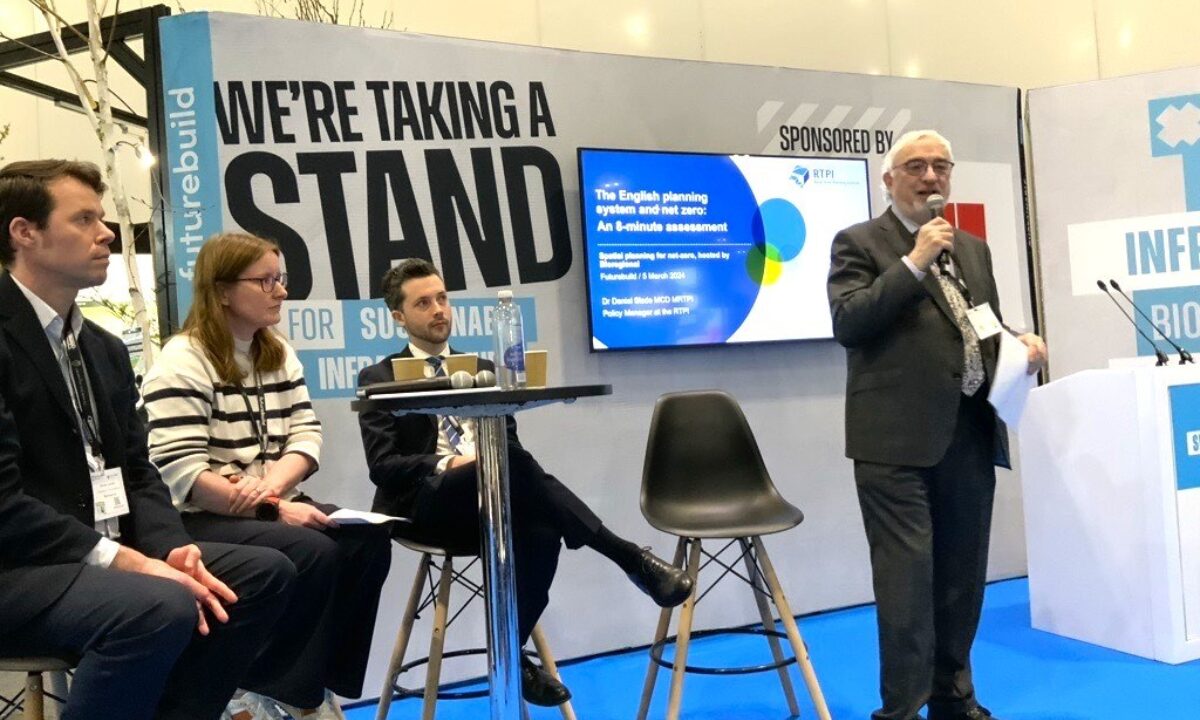
The challenges facing the planning system were set out by the RTPI’s Dr Daniel Slade in a discussion of ‘spatial planning for net zero’ – the first of two knowledge seminars curated by Bioregional. He observed that local planning authorities that wanted to set net-zero development policies were “swimming against the flow, rather than being carried along by national policy” and called for action on carbon reduction to be considered “first among equals” alongside the need for new homes and economic growth. Extensive cuts to local government have reduced the capacity of planning teams and caused councils’ policy work to be defunded.
Session chair Professor Richard Simmons, visiting Professor at the Bartlett School of Planning, pointed out that the reintroduction of regional spatial planning – a larger-than-local perspective that considers labour markets, housing markets, and travel-to-work areas – would create more effective planning policies.
Giving the perspective of a pioneering local authority, Emma Davies, principal sustainability officer at Cambridge Shared Planning, described how she had worked with Bioregional to commission an innovative spatial modelling tool to create the evidence base that underpins Cambridge’s draft local plan. This enabled Cambridge to assess the carbon impact – from homes, infrastructure, and transport – of different development types in different locations, and therefore to plan for growth in the most sustainable way possible.
And Bioregional's Director of Consultancy Ronan Leyden rounded off the session, chaired by Professor Richard Simmons, Visiting Professor at the Bartlett School of Planning, updating delegates on an Innovate UK-funded project being led by Bioregional and Space Syntax, to further develop this spatial modelling tool, which has been used by five local authorities to date, with one plan - Central Lincolnshire - now adopted, having been approved by the Planning Inspector.
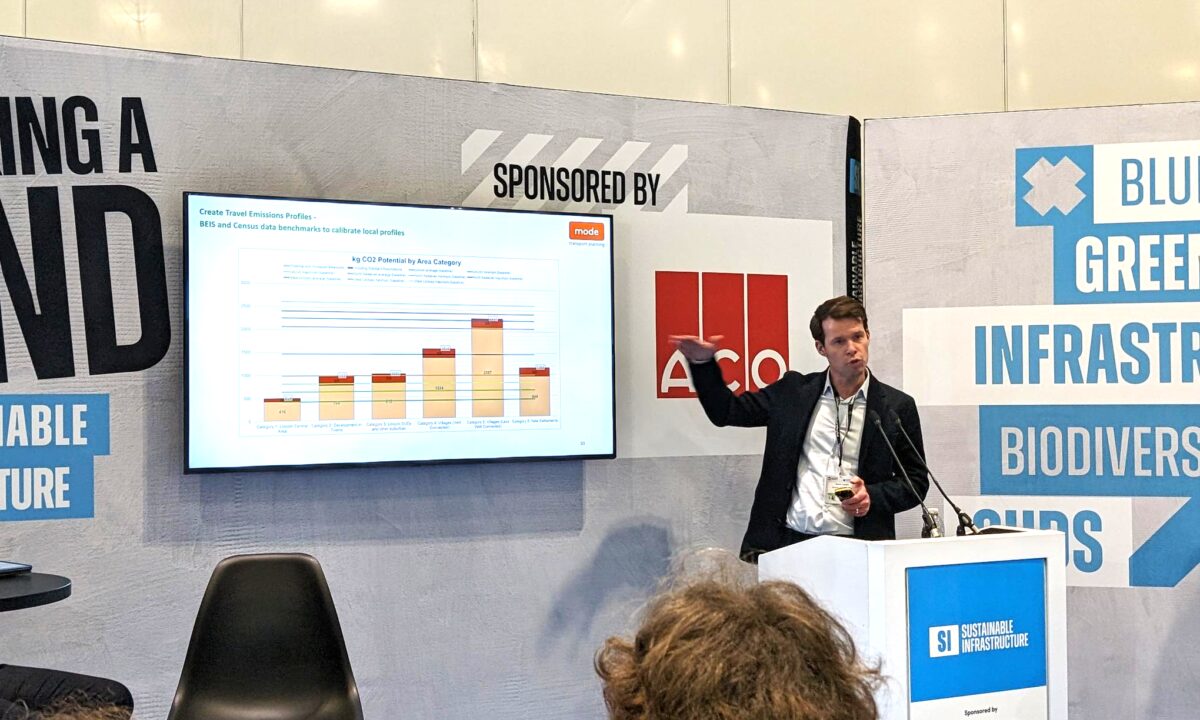
In Bioregional’s second knowledge seminar, which I chaired on Wednesday, we heard from developers who are ‘leading the way’, going beyond government policy to deliver sustainable homes.
Kathryn Dapré, head of sustainability at Cala Homes, outlined five essential steps to deliver a leading sustainability strategy. The housebuilder has reduced scope 1 and 2 emissions by 38%, while its timber frame developments in England minimise the embodied carbon of new homes, which are built with zero waste going to landfill.
To achieve measurable results, Kathryn said that house builders should:
- find the sweet spot between sustainability ambition and customer demand;
- give social and governance aspects of ESG the same attention as environmental considerations, for example by building social value into new developments;
- ensure that all staff understand how their role contributes to company-wide sustainability targets;
- show leadership from the top of their business;
- and create customer demand by being better at communicating the benefits of living in a sustainable home.
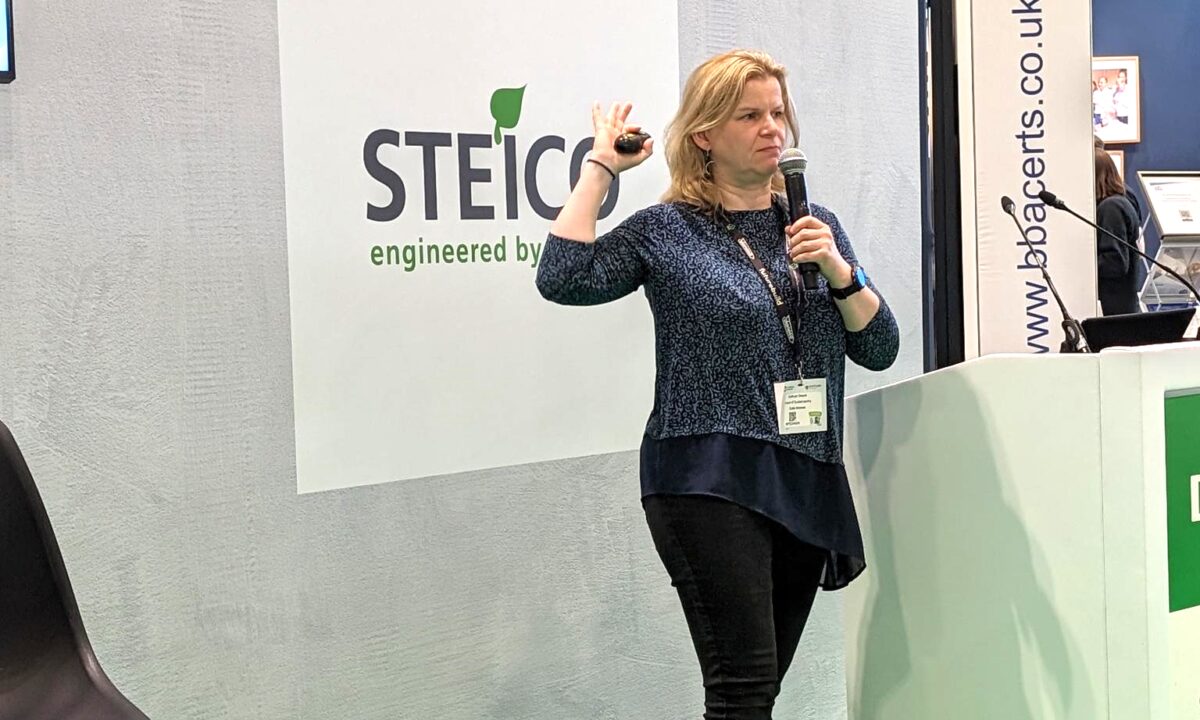
Lloyd Preston-Allen provided an inspirational case study demonstrating how Landsec U+I was working with partners to bring forward Mayfield Manchester – a transformational mixed-use regeneration scheme that is repurposing a 24-acre brownfield site and has already created central Manchester’s first new public park in over a century.
A sustainable world must be shown to be a far, far better world. It’s joy, health, community, social interaction. We’ve got a chance of shifting the dial, moving quickly enough, and inspiring people to act.
Lloyd Preston-Allen, Landsec U+I
The project was already knitting the derelict site “back into the fabric of the city” by using the space to host cultural activities, thereby changing the city’s perceptions of place. It would be “not just sustainable but regenerative,” said Lloyd, “nature positive, people positive, economy positive, and carbon positive”. Narrative and storytelling were key he said. “A sustainable world must be shown to be a far, far better world. It’s joy, health, community, social interaction. We’ve got a chance of shifting the dial, moving quickly enough, and inspiring people to act.”
Daniel Neasham from the Future Homes Hub – the sector body connecting government and housebuilders, and which had authored five ‘contender specifications’ for the new Future Homes Standard – outlined how developers were collaborating through the hub to share knowledge, particularly among SME members, and agree a common framework that would embed sustainability in new development. I think that the only way we are going to achieve cut-through on sustainability in the sector is by working together in this way, which is why I joined the board of the Future Homes Hub a year ago. Daniel encouraged the audience to join as members, highlighting free or discounted rates for smaller organisations.
Answering a question from the floor, Daniel said there was “a lot of frustration being expressed internally at the government’s lack of ambition” following its decision to consult on the Future Homes Hub’s two least-ambitious suggestions for the Future Homes Standard.
I have never seen such a depth of incompetence as Government’s current attempt to enable the planning system to respond to the climate crisis.
Dr Hugh Ellis, Policy Director at the Town and Country Planning Association
This frustration was expressed publicly by Dr Hugh Ellis, Policy Director at the Town and Country Planning Association, in a later session on energy efficiency standards: “I have never seen such a depth of incompetence as Government’s current attempt to enable the planning system to respond to the climate crisis,” he said.
Thomas LeFevre, director at sustainability engineers Etude, noted that one of the Government’s options for the Future Homes Standard would, for the first time in history, see national energy efficiency standards fall. “There are really very good reasons to try to go further,” he said. “We want [central government] to open the door to greater collaboration.” He mooted the creation of a framework for local authorities to set higher energy efficiency standards where they could be locally justified. “If we move towards a set of absolute metrics like ‘energy use intensity’, things would become clearer.”
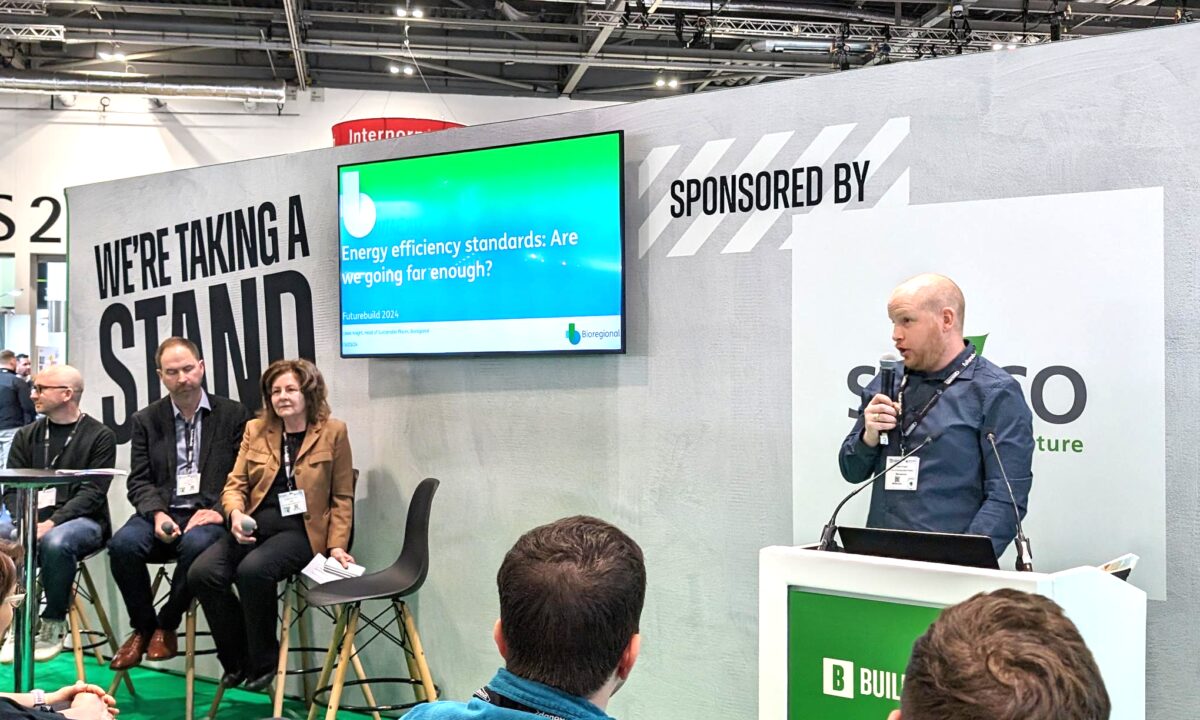
This was echoed by my colleague Lewis Knight, who leads our Sustainable Places team, as he eloquently set out the choice facing local authorities – to pursue net-zero planning policies using the metrics contained in building regulations, as mandated by Government, or to instead use an energy use intensity metric.
The later approach, he said, was proven (as seen in the adoption of local plans in Bath & North East Somerset, Central Lincolnshire, and Cornwall), could be measured post-construction, gave residents greater certainty over energy bills, and would encourage greater use of on-site renewable energy. Government’s preferred metric, by contrast, was not intended to accurately model energy use, would not reward good building design, and was not fit for the development of true net-zero buildings – those that generate as much energy as they use.
These arguments look set to get another public hearing soon, as the Good Law Project supports the environmental coalition Rights Community Action’s legal challenge to the government’s position.
Huge thanks are due to our speakers, and to all who made this year’s Futurebuild such a success. We are working hard with our clients and partners to ensure that next year’s event is less urgent, but no less inspirational.
You can learn more about our built environment consultancy services here, including our solutions for local authorities, newbuild developers and estate-wide retrofit projects.
Header image, L-R: Lloyd Preston-Allen, Landsec U+I, Kathryn Dapré, Cala Homes, Daniel Neasham, Future Homes Hub, Sue Riddlestone OBE, Bioregional





